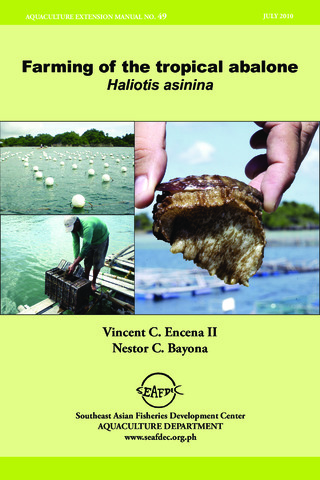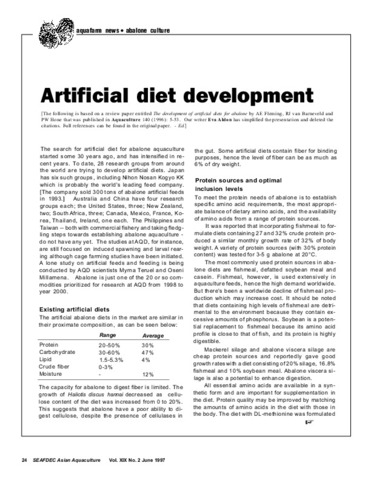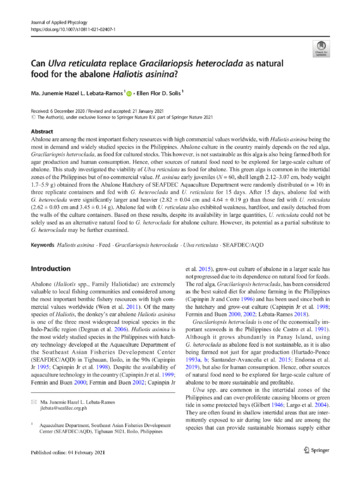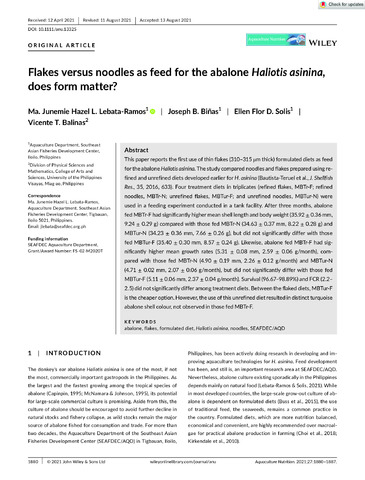Farming of the tropical abalone Haliotis asinina
Share
Abstract
This manual was written to provide abalone growers a practical guide on how to culture abalone based on the studies and trials conducted by SEAFDEC Aquaculture Department.
Suggested Citation
Encena II, V. C., & Bayona, N. C. (2010). Farming of the tropical abalone Haliotis asinina. Tigbauan, Iloilo, Philippines: SEAFDEC Aquaculture Department.
Subject
Taxonomic term
Collections
Related items
Showing items related by title, author, creator and subject.
-
Artificial diet development [for abalone]
Aldon, Eva (Aquaculture Department, Southeast Asian Fisheries Development Center, 1997) -
Can Ulva reticulata replace Gracilariopsis heteroclada as natural food for the abalone Haliotis asinina?
Lebata-Ramos, Ma. Junemie Hazel; Solis, Ellen Flor D. (Springer, 2021-02-04)Abalone are among the most important fishery resources with high commercial values worldwide, with Haliotis asinina being the most in demand and widely studied species in the Philippines. Abalone culture in the country ... -
Flakes versus noodles as feed for the abalone Haliotis asinina, does form matter?
Lebata-Ramos, Ma. Junemie Hazel; Binas, Joseph; Solis, Ellen Flor; Balinas, Vicente T. (Wiley, 2021-12)This paper reports the first use of thin flakes (310–315 μm thick) formulated diets as feed for the abalone Haliotis asinina. The study compared noodles and flakes prepared using refined and unrefined diets developed earlier ...






